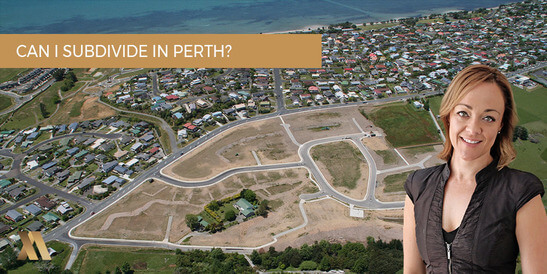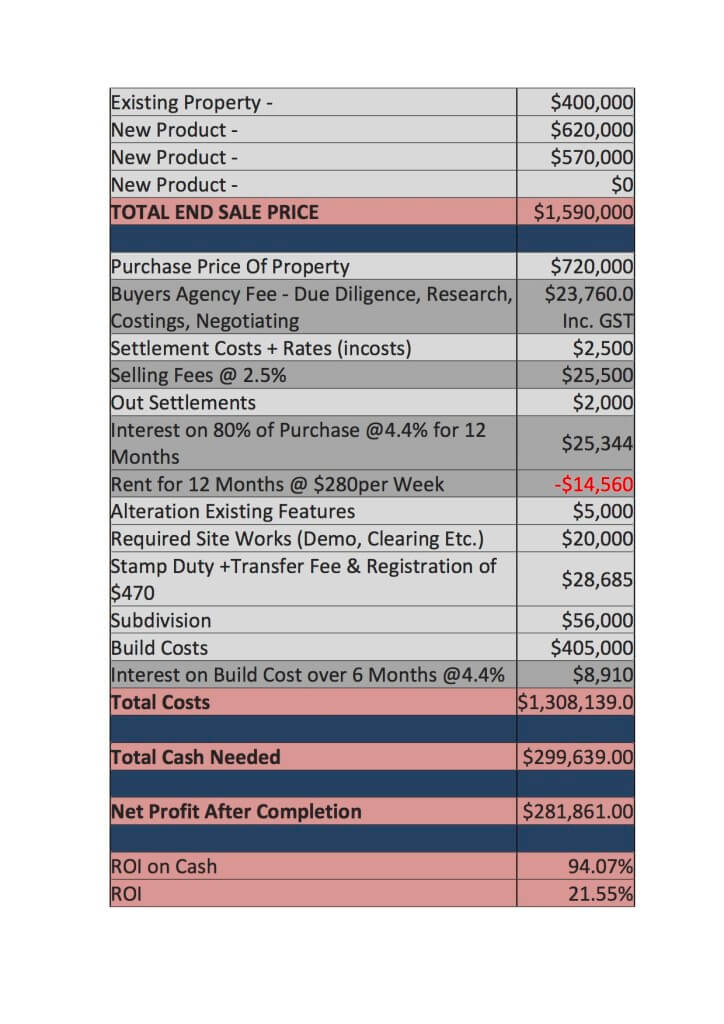How do you figure out if you can subdivide a property in Perth? Natalie Jardim, Licensee of Multiply Property Group, takes you through how to decipher the R-Codes table (part of the the Western Australian Planning Commission’s development rulebook) to figure out if your block or potential investment is sub-divisible. She also goes through the criteria they use to figure out if an investment will be profitable.
*Disclaimer: This is an example only and all cost are estimates based on market values at the time of the recording. This information is for general information purposes only and we recommend seeking professional advice before considering any purchases or development.
“Just wanted to go through some tips for when you’re looking for a development site and how to determine if the site is first of all subdivisible as well as profitable. One of the most important tools they can use when determining whether property is subdivisible is the R-Codes and the R-Codes can be found through the Department of Planning, Western Australian Planning Commission, you can actually download those from their site. I basically walk around with the little R-Code sheet that will tell me what the averages as well as the minimum requirements are in order to subdivide.
So I just looking at the R-Code and the R-Code table it goes through all the different R-Code which starts at R2 and goes through to R80. R80 typically being an apartment site and obviously having the highest density and working all the way back down to R2 which has got the lowest density. Predominately though in Western Australia and in Perth most properties are R20 to R40.
So when we’re looking at for instance R20, which is the most common R-Code throughout WA, you’ll see that in order to subdivide you need to have an average of 450sqms. That’s the first criteria that you need to ensure that you meet. So if you’re looking at a duplex that’s two lots and they need to both average 450. That would mean that you needed total of 900sqms. The next criteria is the minimum, so you need to make sure that you meet that minimum requirement. With R20 the minimum requirement is 350sqms so you can have one block at 350 and the other lot can be say 550, as long as it’s still then complies with the average, which is 450 each.
If we look at R25 your average is 350 and the minimum site you can have is 300sqms so again in this scenario the minimum in order to have a duplex block would be 700 sqms all up and obviously for a triplex site it would be three times 350.
On top of the R-Code we have a Town Planning Scheme, and a Town Planning Scheme is basically the council or the shire’s requirements in order for you to obtain the allocated R-Codes. What we generally do if looking at a site, the first port of call is the R-Code, make sure you meet the average as well as the minimum requirements, and then from there we would use Intramaps, and most shires throughout Perth have quite in depth Intramaps available just online, and that will enable you to actually going in and to measure to make sure that you comply with first of all time the averages and the minimums, and then secondly there would be a link to the Town Planning Scheme. So the Town Planning Scheme will then determine exactly what you must do in order to subdivide and it really important that you do check out what the Town Planning Scheme says because for some shires is it will require that you demolish a house as opposed to just subdividing. Some will ask that you fix the house up, so you spend money creating a better of frontage, others will ensure that you build energy-efficient home so it is important that you check what those requirements are. Also some shires will say that you need to have a minimum access link to the back so it’s really important that you check those because they do vary.
So once you’ve determined whether a site can be subdivided the next step is to go into the Intramaps and to see if you still meet the average and the minimum requirements, especially if you’re looking at retaining the property it’s really important that you do these measurements and ensure that you do have the right amount of land available. So with this particular site you can see that at the corner site and we’re looking at retaining the property and then creating two new titles, one that were going to construct a 4*2 house on, and the other one will have a 3*2. So I looking at the R-Codes this site is actually an R20/R25 site so that means that as you comply with the R20 then you can subdivide it, however there will be conditions with the R25 if you want to subdivide it based on the R25, which in this case we will be.
So I under R25 if we look at the average we’re looking at an average of 350sqms and a minimum of 300sqms. So this site here, as it is a corner site, on you can see that we can subdivide it into three. We’re looking at retaining the house and then to the left of that we are creating a new lot, which is 401sqms roughly, or 400sqms roughly. This site will be the one that we put the 4*2 on. Then on the right hand side we are still able to retain the house and we’re creating a new block at 300sqms. So remembering that under R25 the minimum requirement is three hundred and that would mean that we have a block just shy of four hundred and fifty square meters on which the house will stay on.
So I haven’t determined if a property is actually going to be profitable, because it’s one thing being that the property can be sub-divisible, but there’s no point subdividing property if you’re not going to make any money or any equity. So it’s really important that you actually do a feasibility to ensure that firstly you can subdivide it but secondly and most importantly can actually create equity or cash flow via the actual subdivision itself. So what we do at Subpro is our own feasibilities and the most important part of a feasibility is determining what the end sale price is going to be for a property. So we actually went backwards, we work out what the end sale is going to be and then we take off all the costs associated with getting that property to that finished product.
First thing is end sale, and the way we determine what the end sale is is by comparing apples to apples. So we don’t generally look past a kilometre radius, we would look within that kilometre, and we would find product that is new, that is the same size so if you looking at building a 3*2 at the back we would look for a 3*2, and with the same specs in which you wanted to complete the home.
We would then use that sales evidence, so it has to have settled, has to have sold, we use that as an input into our feasibility. So we always start with the end sale first, and if you have an existing property that you’re selling, so your retaining an existing property, again you need to compare apples to apples. So you need to find sales evidence that shows a similar product in similar condition similar size and on a similar sized block.
It’s really important to note when you’re doing a feasibility that you do actually factor in the cash component that’s needed because if you don’t have that cash component than you actually can’t take a property purchased to its maximum potential. In other words you can’t actually realize a profit, so it’s important we factor in exactly how much cash is required. Generally speaking if you’re building you want to be around the 20% mark (for cash return) and if it’s just a land subdivision you’ll probably be looking around the 15% (cash) return on the project.
So if you think that subdividing is at all that you would like to use in your property investing we are running an educational bus trip in which we will take you to sites just like this, ones which we have purchased for clients and we’re also subdividing for our clients, so you can physically see exactly what has happened and go through the numbers. We will actually to go through the feasibilities so you can see how much you could sell the property, for as well as the costs involved, as well as tips and things to be wary of when actually doing a feasibility, because there are things that can crop up and they can actually blow your budget and make a profitable deal not a profitable deal. So if you’d like to join us on this bus trip it will be very educational, you’ll get to meet lots of other like-minded property investors, so it will be great networking opportunity and you also get to pick our brains while you’re spending the day with us going from site to site as well as working out the feasibilities for these sites. If you would like to come along the link is below and we would love to see you there.”
To book your ticket CLICK HERE
*Disclaimer: This is an example only and all cost are estimates based on current market values


